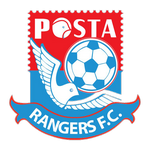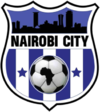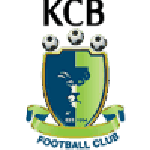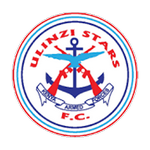| Coach | NA |
| Venue | Nyayo National Stadium |
AFC Leopards Trivia
AFC Leopards predictions
Predictions for AFC Leopards: See upcoming and historic predictions for AFC Leopards below.
Disclaimer: Past performance does not guarantee future results. Betting involves risk; only wager what you can afford to lose. Always gamble responsibly.
AFC Leopards Opinions
 Who is the greatest AFC Leopards player of all time?
Who is the greatest AFC Leopards player of all time?
AFC Leopards latest results
| 14/04 | - | ||
| 07/04 | 1 - 1 | ||
| 03/03 | 2 - 0 | ||
| 18/02 | 0 - 0 | ||
| 11/02 | 1 - 0 |
FKF Premier League standings
| Rank | Team | MP | W | D | L | GF | GA | GD | Pts |
|---|---|---|---|---|---|---|---|---|---|
| 1 |
 GOR Mahia
GOR Mahia
|
25 | 14 | 9 | 2 | 30 | 11 | 19 | 51 |
| 2 |
 Tusker
Tusker
|
25 | 13 | 4 | 8 | 34 | 18 | 16 | 43 |
| 3 |
 Bandari
Bandari
|
25 | 13 | 4 | 8 | 25 | 19 | 6 | 43 |
| 4 |
 Police
Police
|
24 | 10 | 9 | 5 | 29 | 18 | 11 | 39 |
| 5 |
 Posta Rangers FC
Posta Rangers FC
|
25 | 11 | 6 | 8 | 24 | 23 | 1 | 39 |
| 6 |
 Nairobi City Stars
Nairobi City Stars
|
25 | 11 | 6 | 8 | 28 | 29 | -1 | 39 |
| 7 |
 Homeboyz
Homeboyz
|
25 | 10 | 8 | 7 | 25 | 19 | 6 | 38 |
| 8 |
 AFC Leopards
AFC Leopards
|
24 | 8 | 10 | 6 | 21 | 16 | 5 | 34 |
| 9 |
 KCB
KCB
|
24 | 8 | 9 | 7 | 25 | 25 | 0 | 33 |
| 10 |
 Bidco United
Bidco United
|
24 | 8 | 8 | 8 | 25 | 25 | 0 | 32 |
| 11 |
 Murang'a SEAL
Murang'a SEAL
|
24 | 8 | 7 | 9 | 19 | 21 | -2 | 31 |
| 12 |
 Kariobangi Sharks
Kariobangi Sharks
|
25 | 7 | 9 | 9 | 26 | 26 | 0 | 30 |
| 13 |
 Ulinzi Stars
Ulinzi Stars
|
25 | 8 | 5 | 12 | 17 | 19 | -2 | 29 |
| 14 |
 Talanta
Talanta
|
24 | 5 | 12 | 7 | 24 | 31 | -7 | 27 |
| 15 |
 Sofapaka
Sofapaka
|
24 | 7 | 5 | 12 | 26 | 37 | -11 | 26 |
| 16 |
 Muhoroni Youth
Muhoroni Youth
|
25 | 5 | 10 | 10 | 15 | 25 | -10 | 25 |
| 17 |
 Shabana
Shabana
|
25 | 5 | 6 | 14 | 25 | 37 | -12 | 21 |
| 18 |
 Nzoia Sugar
Nzoia Sugar
|
24 | 4 | 5 | 15 | 18 | 37 | -19 | 17 |
About AFC Leopards
AFC Leopards is one of the oldest and most successful football clubs in Kenya. Founded in 1964, the club has a rich history that spans over five decades, during which it has firmly established itself as a powerhouse in Kenyan football. The club is based in Nairobi, the capital city of Kenya, and its fan base extends across the country and beyond.
The club was originally known as Abaluhya Football Club, representing the Luhya community. However, it has since evolved into a national team with players and supporters from all ethnic backgrounds. The name "Leopards" was adopted in 1973, symbolizing the team's agility, strength, and prowess, akin to the attributes of a leopard.
AFC Leopards has an impressive record in the Kenyan Premier League, having won the league title 13 times. The club has also had considerable success in domestic cup competitions, winning the FKF President's Cup, formerly known as the Moi Golden Cup, ten times. Internationally, AFC Leopards has represented Kenya in the CAF Champions League and the CAF Confederation Cup, with their best performance coming in 1985 when they reached the final of the African Cup Winners' Cup.
The club's traditional colors are blue and white, and their home games are played at the Nyayo National Stadium and the Moi International Sports Centre. The team's emblem, a roaring leopard, is a symbol of their fighting spirit and determination.
AFC Leopards has a fierce rivalry with Gor Mahia, another top Kenyan football club. Matches between the two teams, known as the "Mashemeji Derby," are some of the most anticipated and watched games in the Kenyan football calendar. This rivalry not only fuels the competitive spirit of the teams but also contributes significantly to the growth and popularity of football in Kenya.
Over the years, AFC Leopards has produced numerous talented players who have gone on to represent Kenya at the international level. The club is also known for its youth development programs, which have been instrumental in nurturing young talent and promoting grassroots football.
Despite facing financial and administrative challenges in the past, AFC Leopards has remained resilient and committed to its mission of promoting football in Kenya. The club's management, players, and fans share a common vision of restoring the club's glory and making it a force to reckon with in African football.
In conclusion, AFC Leopards is more than just a football club; it is a symbol of unity and pride for its fans and the Kenyan nation at large. Its rich history, achievements, and contribution to Kenyan football make it one of the most respected and revered football clubs in the country.















